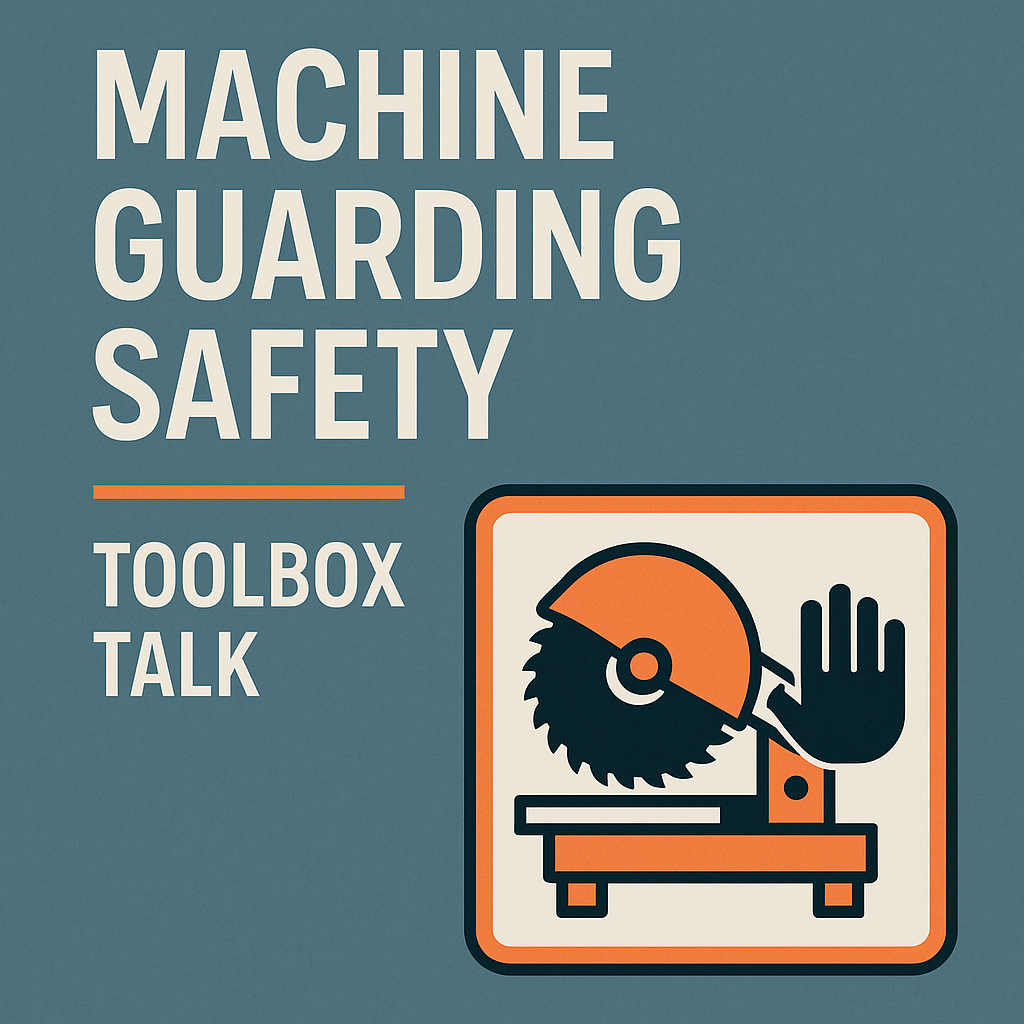
Machine Guarding Safety TBT
Good morning team,
Today’s topic is Machine Guarding Safety — one of the most important yet often overlooked aspects of industrial and construction site safety.
Machine guards are not just pieces of metal or plastic — they are your first line of defense against rotating blades, moving belts, flying debris, and pinch points that could cause serious injury.
When a guard is missing or removed, your body is exposed to forces you cannot react to in time.
1. Why Machine Guarding is Critical
- Moving parts can cause amputations, crushing, entanglement, and lacerations.
- Guards prevent accidental contact and contain fragments.
- They also protect against sparks, dust, and splashing coolants.
- Regulatory bodies like OSHA make machine guarding a legal requirement.
2. Common Hazards Without Guards
- Contact Hazards: Hands or clothing getting caught in belts, pulleys, or gears.
- Impact Hazards: Flying parts if a tool or machine component fails.
- Ejection Hazards: Material being thrown from a machine at high speed.
- Entanglement Hazards: Hair, jewelry, or loose clothing getting pulled in.
3. Types of Machine Guards
3.1 Fixed Guards
- Permanent barriers that prevent access.
- Example: A cover over a gear assembly.
3.2 Interlocked Guards
- Shuts off power when opened.
- Example: Safety doors on CNC machines.
3.3 Adjustable Guards
- Can be adjusted to fit different sizes of stock material.
- Example: Blade guards on table saws.
3.4 Self-Adjusting Guards
- Automatically move into place as the workpiece approaches.
- Example: Circular saw guards.
4. Machine Guarding Do’s and Don’ts
✅ Do:
- Keep guards in place and in good condition.
- Report missing or damaged guards immediately.
- Follow lockout/tagout procedures before maintenance.
- Use PPE such as safety glasses, gloves, and hearing protection.
❌ Don’t:
- Remove or bypass guards for convenience.
- Wear loose clothing or jewelry around machines.
- Reach over or under moving parts.
- Attempt to fix a guard while the machine is running.
5. Lockout/Tagout Connection
Machine guarding works hand in hand with Lockout/Tagout (LOTO). Guards protect you during operation; LOTO protects you during maintenance or repairs.
6. Real-Life Case Study
A maintenance worker removed a guard on a conveyor to clear a jam but didn’t shut down the system. His glove got caught, pulling in his hand. The injuries resulted in partial amputation.
Lesson: Never remove guards without shutting down and locking out the machine.
7. Worker Engagement – Q&A
- What are the four main types of machine guards?
- Why is it dangerous to wear loose clothing around machinery?
- When is it acceptable to remove a machine guard?
8. Closing Words – Bringing It Back to the Start
Alright team, we started by talking about how machine guards are our first line of defense. The reality is, they’re not just there because someone told us to use them — they’re there because they prevent life-changing injuries.
Every guard has a purpose. If it’s in the way, it’s probably in the way of something dangerous.
So remember: Keep them on. Keep them working. Keep yourself safe.
Let’s protect our hands, our limbs, and our lives by respecting the guards and the rules that keep us safe.
Stay alert, stay guarded, and let’s have a productive, injury-free day.